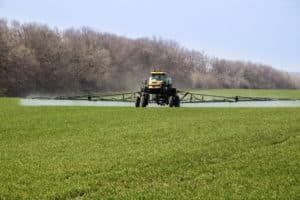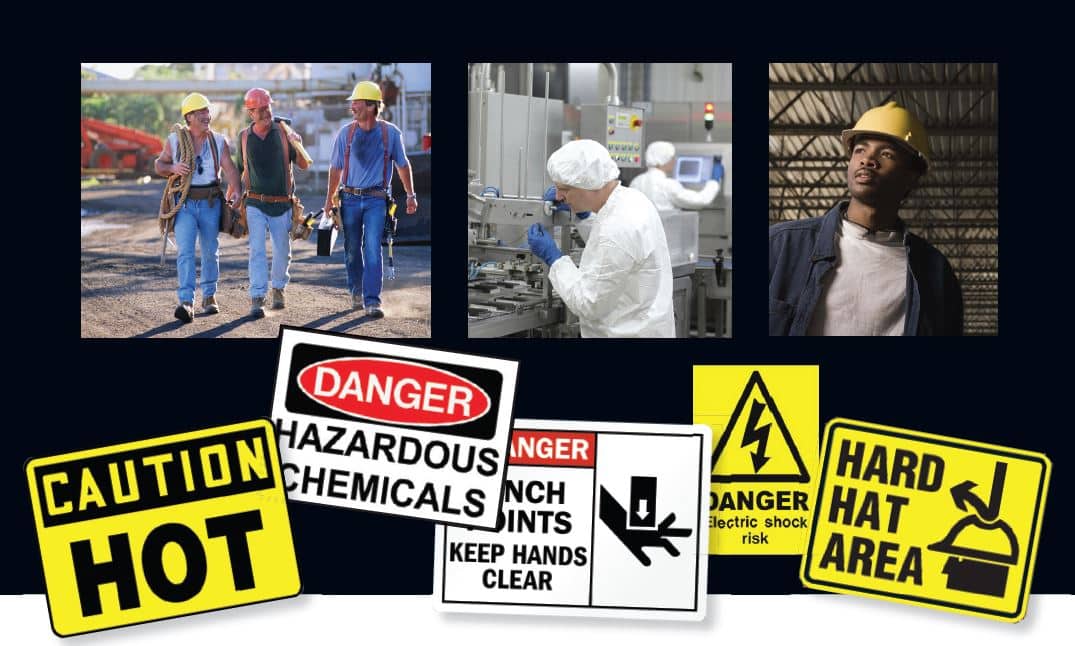Organization: Felker Brothers Corp., Marshfield, WI.
Business: Pipe manufacturer.
Agency: OSHA.
Penalty: $110,458 (proposed).
Reason for fine: Combustible materials were located within 35 feet of welding activities.
Note: OSHA said wooden racks and form plugs were less than 35 feet away from hot work areas. The employer was also cited because machines designed for fixed locations weren’t securely anchored to prevent them from moving or walking during use. And portable jacks used to support loads weren’t marked with their rated load capacities.
Eyewashes, showers not well maintained.
It’s not enough to just provide emergency eyewash stations and body showers to workers; you also have to make sure the equipment is maintained in good operating condition.
Organization: Eddy Packing Co., Yoakum, TX.
Business: Packing plant.
Agency: OSHA.
Penalty: $128,562 (proposed).
Reason for fine: The company didn’t ensure that emergency eyewashes and body shower stations were maintained according to ANSI standards.
Note: OSHA also said the company didn’t provide fit tests to workers wearing respirators. And staffers weren’t medically evaluated to ensure they could safely use respirators. In addition, the emergency response plan didn’t include information about handling small chemical releases.
Huge Fine for Pesticide Worker Safety Violations[via EHS Daily Advisor]
A global chemical and seed manufacturer was recently fined millions by the U.S. Environmental Protection Agency (EPA) for violations of several rules related to pesticides, including the Worker Protection Standard (WPS). This company ran afoul of its responsibilities when it comes to what the EPA considers the most dangerous pesticides: restricted use pesticides (RUPs). The recent amendments to the regulations for RUP applications that could affect over 1 million applicators nationwide.
 Syngenta Seeds, LLC, faces over $4.8 million in fines for pesticide violations at its crop research farm in Kekaha, Kauai, Hawaii.
Syngenta Seeds, LLC, faces over $4.8 million in fines for pesticide violations at its crop research farm in Kekaha, Kauai, Hawaii.
According to the EPA, 19 workers entered a Syngenta field that was recently sprayed with a restricted use organophosphate insecticide. Ten of these workers were taken to a nearby hospital for medical treatment. RUPs, which may only be used by licensed and certified pesticide applicators, may not be sold to the general public because of their high toxicity, potential for harm, and impact on the environment.
Here’s What Happened
The pesticide in question was Lorsban Advanced, a RUP registered with the EPA. It may only be used in accordance with the instructions on its label and the WPS. Under its use requirements, workers may not reenter treated areas without personal protective equipment (PPE) during the restricted entry interval (REI). The REI for Lorsban Advance is 24 hours.
The EPA alleges that Syngenta:
- Failed to notify its workers, both orally and with signs, to avoid fields recently treated with pesticides;
- Allowed or directed workers to enter the treated field before REI had passed and without proper PPE;
- Failed to provide water for routine and emergency eye flushing;
- Failed to provide adequate decontamination supplies on-site; and
- Failed to provide prompt transportation for emergency medical attention.
In all, there are 261 counts in EPA’s complaint. The proposed penalty is $18,750 per count for a total of almost $4.9 million.
Inspector Walking Around
An inspector from the Hawaii Department of Agriculture just happened to be at the Syngenta facility when the incident occurred, prompting an immediate investigation. She was there to investigate a prior complaint. Among other violations, she saw workers smoking cigarettes and drinking beverages before they had been decontaminated, so she immediately took photographs and documented what she observed. She also conducted follow-up investigations during which she took statements from workers. The Hawaii Department of Agriculture then formally referred the investigation of suspected WPS violations to the EPA.
ANSI Compliance, Safety & Health for Food ProcessingFrom the oil industry to mining, agriculture to research, any working environment that puts employees in close proximity to occupational hazards such as potentially harmful chemicals must make workplace safety a priority. The food processing, meat packing, and poultry processing industries are no exception.
INDUSTRY RISKS
In addition to physical hazards like high noise levels, cuts, and musculoskeletal disorders, exposure to substances like ammonia, carbon dioxide and carbon monoxide can pose another risk to employees in the meat packing and food processing industries.
In March of 2016, OSHA fined a Texas-based poultry plant for allegedly allowing the release of anhydrous ammonia, a gas commonly used in significant quantities as a refrigerant across a variety of food processing facilities. This colorless gas, classified as hazardous by the OSHA Hazard Communication Standard, is known to be highly irritating, with a very sharp, suffocating odor. Immediate health effects of exposure to anhydrous ammonia include:
• Burning of the eyes, nose and throat
• Coughing and choking
• Swelling of the throat and/or chemical burns to the lungs
Prolonged exposure can lead to eye damage, severe burns, and even death.
Another OSHA violation occurred in December 2012 when a food manufacturing facility did not provide an emergency shower or eyewash in the immediate vicinity of a forklift battery charging station.
MEETING THE STANDARD
Immediate first aid for exposure to anhydrous ammonia or battery acid includes providing fresh air and immediate flushing with water for no fewer than 15 minutes. Safety data sheets for many chemicals require that eyewash stations and safety showers are close to the workstation location as a protective measure. And OSHA 29 CFR 19010.151(c) states “where employees were exposed to injurious corrosive materials, suitable facilities for quick drenching or flushing of the eyes and body.” This kind of emergency response access necessitates appropriate safety equipment and proper employee training – hallmarks of industry guidelines set forth by the American National Standards Institute (ANSI).
ANSI Z358.1 is a comprehensive guideline that outlines specific parameters for the appropriate design, installation, performance, certification, use and maintenance of emergency eyewash and shower equipment across a range of industries. Failure to comply with all aspects of ANSI Z358.1 not only puts employees at risk, it opens a facility to potential liabilities and penalties. When working with chemicals, such as anhydrous ammonia, taking preventative measures is your safest bet. By supplying the appropriate emergency eyewash and shower equipment, you’ll be able to prevent further injury as well as reduce the risk of OSHA and ANSI non-compliance.
Download this white paper to share or save>>
Increase In OSHA Fines Now in Effect
For the first time in twenty-five years, OSHA penalties are increasing – and significantly. A federal act passed in 1990 exempted OSHA from increasing fines to account for inflation, but the new budget signed into law on November 2, 2015, includes an amendment striking that exemption.¹
The “Catch-Up Adjustment,” based on the percentage difference between October 1990 and the Consumer Price Index Budget of October 2015, will amount to a penalty increase of about 80%. That will bump the current $7,000 cap on serious OSHA violations to about $12,500, and the willful, repeat violations penalty of $70,000 to just over $126,000. Once this one-time adjustment is made, OSHA will also be required to adjust penalties annually using the Consumer Price Index’s yearly percentage increase.²
Budget changes will go into effect on July 1 of 2016, and increased penalties will begin August 1 in all states regulated by OSHA. For employers, now is the time to ensure that workplace safety programs and equipment are meeting appropriate standards. This includes:
• Confirming that employee safety training is comprehensive and documented
• Assessing workplaces for potential hazards and addressing them in the most appropriate manner
• Addressing employee safety concerns
• Confirming that existing safety equipment is fully compliant and operational
Consider the OSHA penalty hike a boon for workplace safety. Studies have shown that workplace injuries are reduced in settings in which health and safety inspections have direct consequences for violations.³ And while it can be asking the impossible to build a system with the resources to inspect every single workplace for violations, increasing employer awareness about steep financial penalties for non-compliance may well do the trick. An 80% increase in current OSHA fines will likely prove an effective method of stressing the importance of workplace safety.
Interested in learning if your facility is ANSI compliant? Sign up for a complimentary, one-day onsite ANSI Survey at www.Hawsco.com/survey.
TO DOWNLOAD THIS WHITE PAPER, CLICK HERE.






